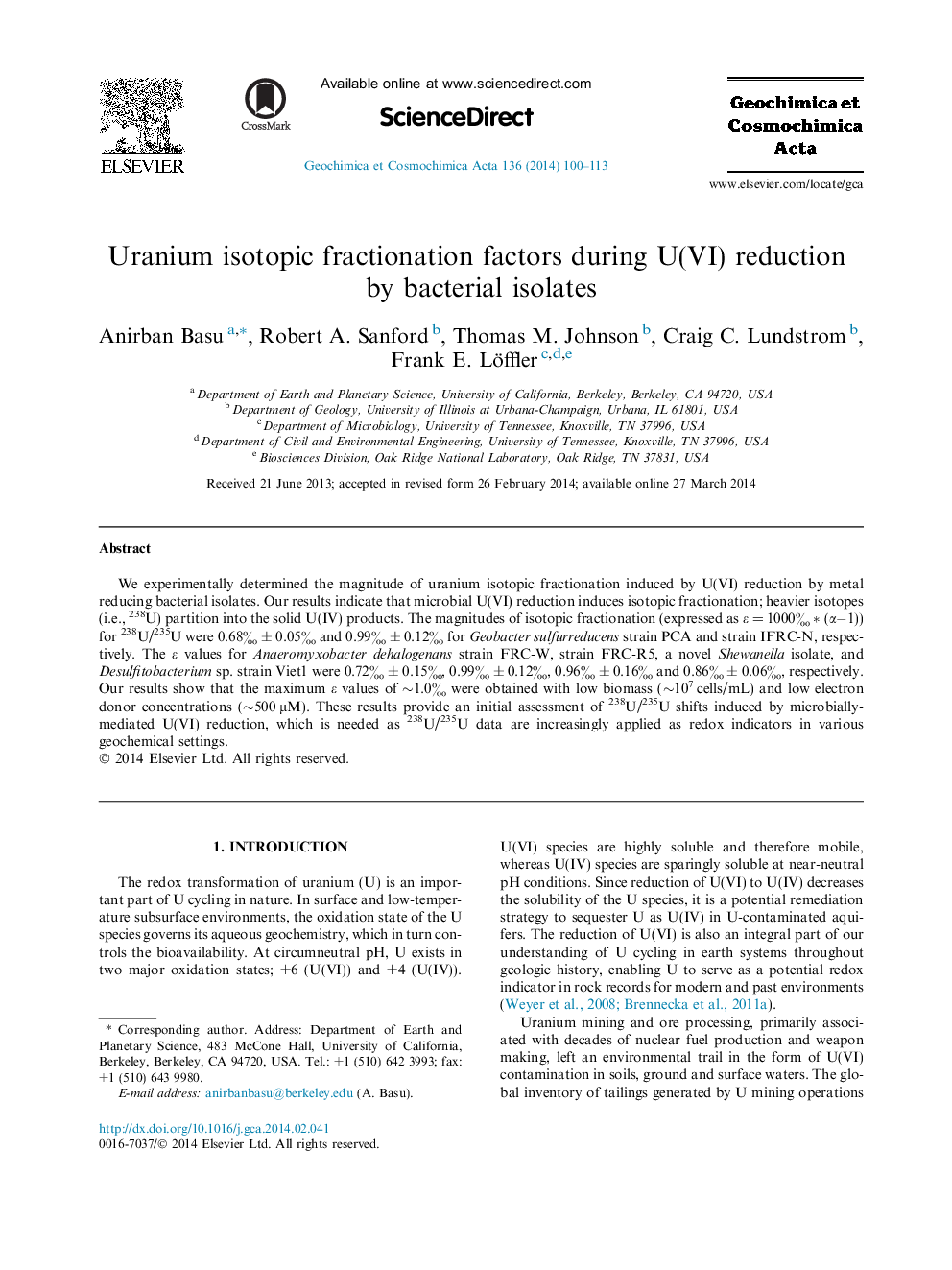| Article ID | Journal | Published Year | Pages | File Type |
|---|---|---|---|---|
| 6438600 | Geochimica et Cosmochimica Acta | 2014 | 14 Pages |
Abstract
We experimentally determined the magnitude of uranium isotopic fractionation induced by U(VI) reduction by metal reducing bacterial isolates. Our results indicate that microbial U(VI) reduction induces isotopic fractionation; heavier isotopes (i.e., 238U) partition into the solid U(IV) products. The magnitudes of isotopic fractionation (expressed as ε = 1000â°Â * (αâ1)) for 238U/235U were 0.68â°Â ± 0.05â° and 0.99â°Â ± 0.12â° for Geobacter sulfurreducens strain PCA and strain IFRC-N, respectively. The ε values for Anaeromyxobacter dehalogenans strain FRC-W, strain FRC-R5, a novel Shewanella isolate, and Desulfitobacterium sp. strain Viet1 were 0.72â°Â ± 0.15â°, 0.99â°Â ± 0.12â°, 0.96â°Â ± 0.16â° and 0.86â°Â ± 0.06â°, respectively. Our results show that the maximum ε values of â¼1.0â° were obtained with low biomass (â¼107 cells/mL) and low electron donor concentrations (â¼500 μM). These results provide an initial assessment of 238U/235U shifts induced by microbially-mediated U(VI) reduction, which is needed as 238U/235U data are increasingly applied as redox indicators in various geochemical settings.
Related Topics
Physical Sciences and Engineering
Earth and Planetary Sciences
Geochemistry and Petrology
Authors
Anirban Basu, Robert A. Sanford, Thomas M. Johnson, Craig C. Lundstrom, Frank E. Löffler,
